TOYOTA YARIS HATCHBACK 2011 Owners Manual
YARIS HATCHBACK 2011
TOYOTA
TOYOTA
https://www.carmanualsonline.info/img/14/59278/w960_59278-0.png
TOYOTA YARIS HATCHBACK 2011 Owners Manual
Trending: rear view mirror, stop start, transmission, oil, tire size, wheelbase, fog light
Page 91 of 428
77
1-5. Refueling
1
Before driving
NOTICE
n
Refueling
Do not spill fuel during refueling.
Doing so may damage the vehicle, such as causing the exhaust systems to
operate abnormally or damaging fuel system components or the vehicle's
painted surface.
Page 92 of 428
78
1-6. Theft deterrent system
Engine immobilizer system∗
∗: If equipped
The vehicle's keys have built-in transponder chips that prevent the
engine from starting if the key has not been previously registered in
the vehicle's on-board computer.
Never leave the keys inside the vehicle when you leave the vehicle.
The indicator light flashes after
the key has been removed
from the engine switch to indi-
cate that the system is operat-
ing.
The indicator light stops flash-
ing after the registered key
has been inserted into the
engine switch to indicate that
the system has been can-
celed.
Page 93 of 428
![TOYOTA YARIS HATCHBACK 2011 Owners Manual 79
1-6. Theft deterrent system
1
Before driving
]
n
System maintenance
The vehicle has a maintenance-free type engine immobilizer system.
n Conditions that may cause the system to malfunction
l If th TOYOTA YARIS HATCHBACK 2011 Owners Manual 79
1-6. Theft deterrent system
1
Before driving
]
n
System maintenance
The vehicle has a maintenance-free type engine immobilizer system.
n Conditions that may cause the system to malfunction
l If th](/img/14/59278/w960_59278-92.png)
79
1-6. Theft deterrent system
1
Before driving
]
n
System maintenance
The vehicle has a maintenance-free type engine immobilizer system.
n Conditions that may cause the system to malfunction
l If the key is in contact with a metallic object
l If the key is in close proximity to or touching a key to the security system
(key with a built-in transponder chip) of another vehicle
n Certifications for the engine immobilizer system
For vehicles sold in U.S.A.
FCC ID: MOZRI-20BTY
This device complies with Part 15 of the FCC Rules. Operation is subject to
the following two conditions: (1) This device may not cause harmful interfer-
ence, and (2) this device must accept any interference received, including
interference that may cause undesired operation.
FCC WARNING:
Changes or modifications not expressly approved by the party responsible
for compliance could void the user’s authority to operate the equipment. For vehicles sold in Canada
This device complies with RSS-210 of Industry Canada. Operation is subject
to the following two conditions: (1) This device may not cause interference,
and (2) this device must accept any interference, including interference that
may cause undesired operation of the device.
NOTICE
n To ensure the system operates correctly
Do not modify or remove the system. If modified or removed, the proper
operation of the system cannot be guaranteed.
Page 94 of 428
80
1-6. Theft deterrent system
Alarm (Puerto Rico)
The system sounds the alarm and flashes lights when forcible entry
is detected.
n Triggering of the alarm
The alarm is triggered in the fo llowing situations when the alarm
is set.
l A locked door is unlocked or opened in any way other than
using the key.
l The hood is opened.
n Setting the alarm system
Close the doors and
hood, and lock all
doors using the key.
Use the key to lock the
last door. When the back
door is the last, turn the
key to the unlock posi-
tion and then turn to the
door lock position.
The system will be set
automatically after 30
seconds.
The indicator light
changes from being on to
flashing when the sys-
tem is set.
nDeactivating or stopping the alarm
lUnlock the doors.
l Turn the engine switch to the ON position or start the engine.
(The alarm will be deactivated or stopped after a few sec-
onds.)
Page 95 of 428
81
1-6. Theft deterrent system
1
Before driving
n
System maintenance
The vehicle has a maintenance-free type alarm system.
n Items to check before locking the vehicle
To prevent unexpected triggering of the alarm and vehicle theft, make sure
of the following.
lNobody is in the vehicle.
l The windows are closed before the alarm is set.
l No valuables or other personal items are left in the vehicle.
n Triggering of the alarm
The alarm may be triggered in the following situations.
(Stopping the alarm deactivates the system.)
n When the battery is disconnected
Be sure to cancel the alarm system.
If the battery is disconnected before canceling the alarm, the system may be
triggered when the battery is reconnected. l
A person inside the vehicle opens a
door or hood.
l The battery is recharged or replaced
when the vehicle is locked.
Page 96 of 428
82 1-6. Theft deterrent system
nAlarm-operated door lock
lWhen the alarm is operating, the door s are locked automatically to pre-
vent intruders.
l Do not leave the key inside the vehicle when the alarm is operating, and
make sure the key is not inside the vehicle when recharging or replacing
the battery.
NOTICE
nTo ensure the system operates correctly
Do not modify or remove the system. If modified or removed, the proper
operation of the system cannot be guaranteed.
Page 97 of 428
83
1
1-6. Theft deterrent system
Before driving
Theft prevention labels (except Canada)
Drive in a good posture as follows:
These labels are attached to
the vehicle to reduce vehicle
theft by facilitating the tracing
and recovery of parts from sto-
len vehicles. Do not remove
under penalty of law.
Page 98 of 428
84
1-7. Safety information
Correct driving posture
Drive in a good posture as follows:
Sit upright and well back in
the seat. (→P. 3 9 )
Adjust the position of the
seat forward or backward to
ensure the pedals can be
reached and easily
depressed to the extent
required. ( →P. 39)
Adjust the seatback so that
the controls are easily oper-
able.
Adjust the tilt positions of
the steering wheel down-
ward so the airbag is facing
your chest. ( →P. 6 5 )
Lock the head restraint in
place with the center of the
head restraint closest to the
top of your ears. ( →P. 49)
Wear the seat belt correctly.
( → P. 55)
Page 99 of 428
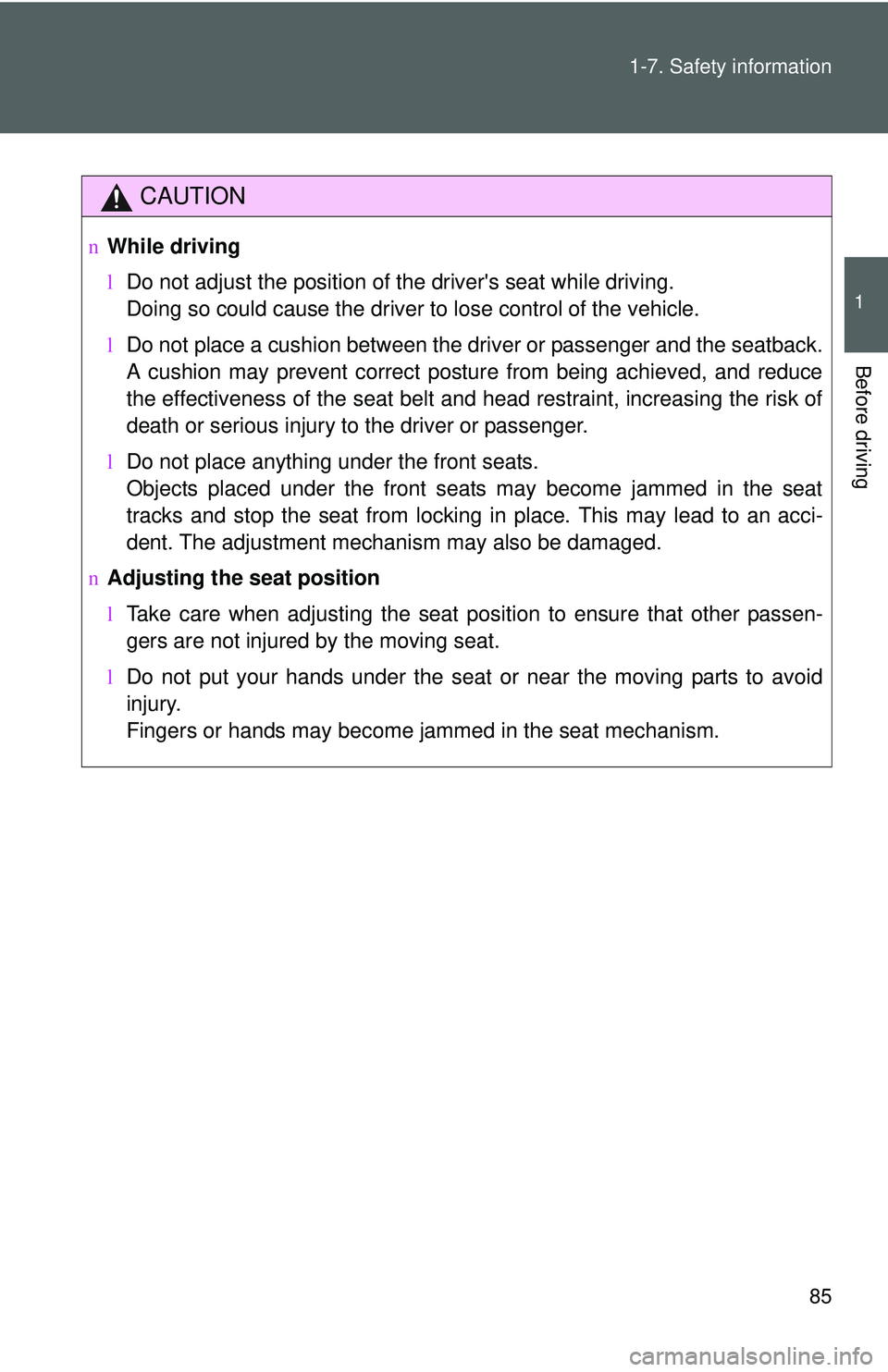
85
1-7. Safety information
1
Before driving
CAUTION
n
While driving
lDo not adjust the position of the driver's seat while driving.
Doing so could cause the driver to lose control of the vehicle.
l Do not place a cushion between the driver or passenger and the seatback.
A cushion may prevent correct posture from being achieved, and reduce
the effectiveness of the seat belt and head restraint, increasing the risk of
death or serious injury to the driver or passenger.
l Do not place anything under the front seats.
Objects placed under the front seats may become jammed in the seat
tracks and stop the seat from locking in place. This may lead to an acci-
dent. The adjustment mechanism may also be damaged.
n Adjusting the seat position
lTake care when adjusting the seat position to ensure that other passen-
gers are not injured by the moving seat.
l Do not put your hands under the seat or near the moving parts to avoid
injury.
Fingers or hands may become jammed in the seat mechanism.
Page 100 of 428
86
1-7. Safety information
SRS airbags
The SRS airbags inflate when the vehicle is subjected to certain
types of severe impacts that may cause significant injury to the
occupants. They work together with the seat belts to help reduce the
risk of death or serious injury.
Front airbags
Driver airbag/front passenger airbag
Can help protect the head and ches t of the driver and front pas-
senger from impact with interior components.
Side and curtain shield airbags
Side airbags (if equipped)
Can help protect the torso of the front seat occupants.
Curtain shield airbags (if equipped)
Can help protect primarily the head of outside occupants.
Trending: tires, four wheel drive, traction control, battery, wiring, fuel filter, seats
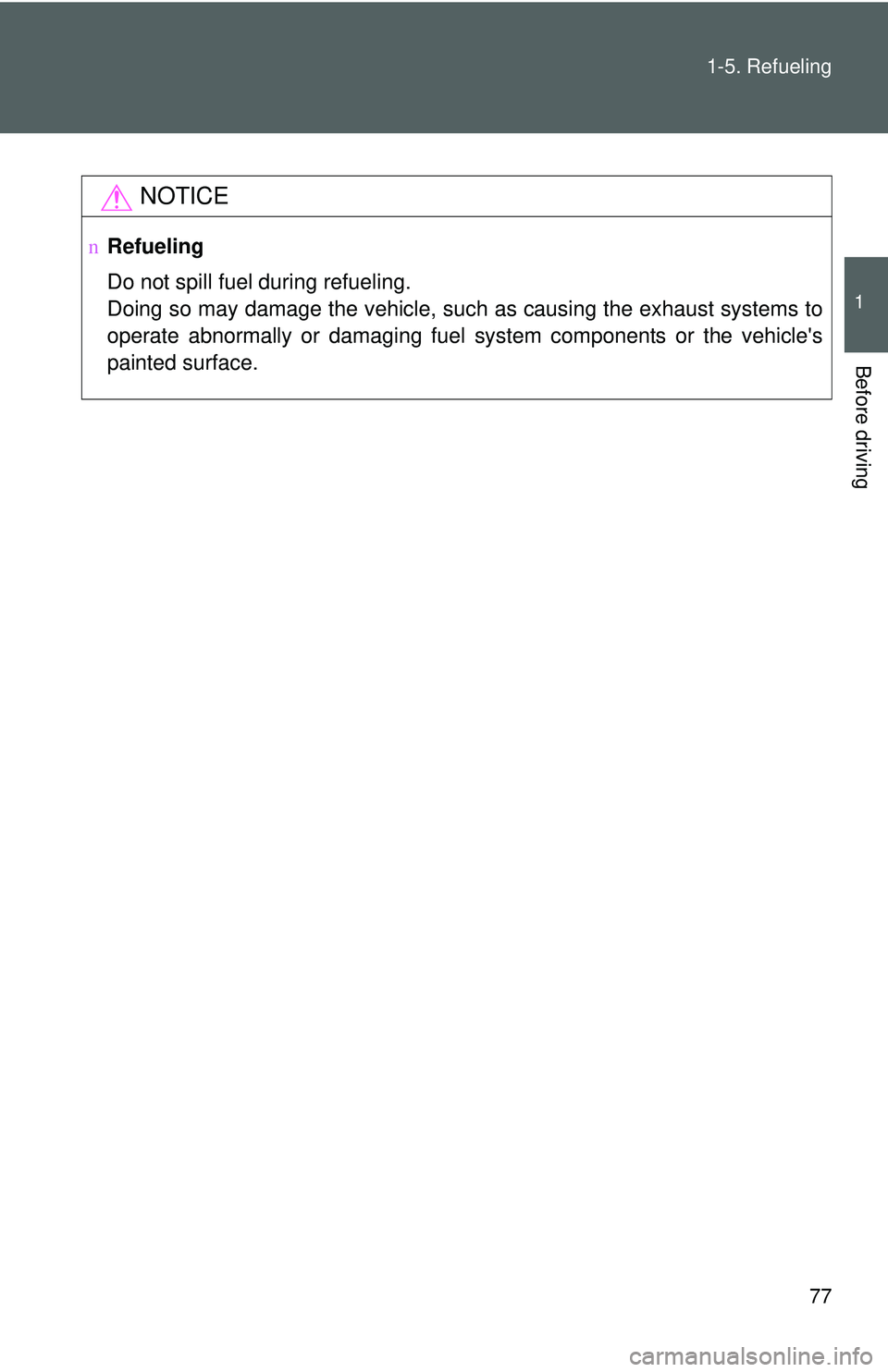
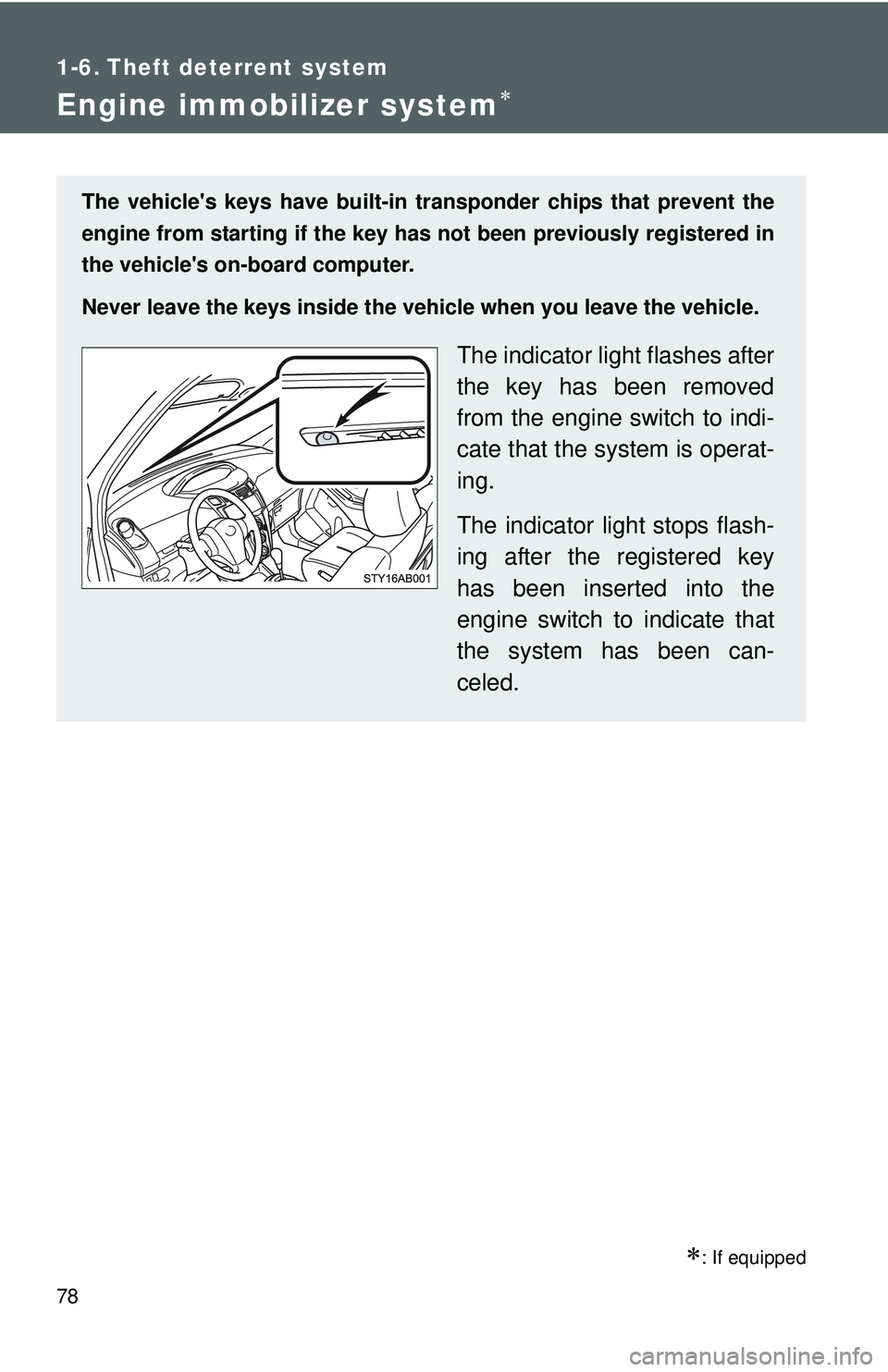
![TOYOTA YARIS HATCHBACK 2011 Owners Manual 79
1-6. Theft deterrent system
1
Before driving
]
n
System maintenance
The vehicle has a maintenance-free type engine immobilizer system.
n Conditions that may cause the system to malfunction
l If th TOYOTA YARIS HATCHBACK 2011 Owners Manual 79
1-6. Theft deterrent system
1
Before driving
]
n
System maintenance
The vehicle has a maintenance-free type engine immobilizer system.
n Conditions that may cause the system to malfunction
l If th](/img/14/59278/w960_59278-92.png)
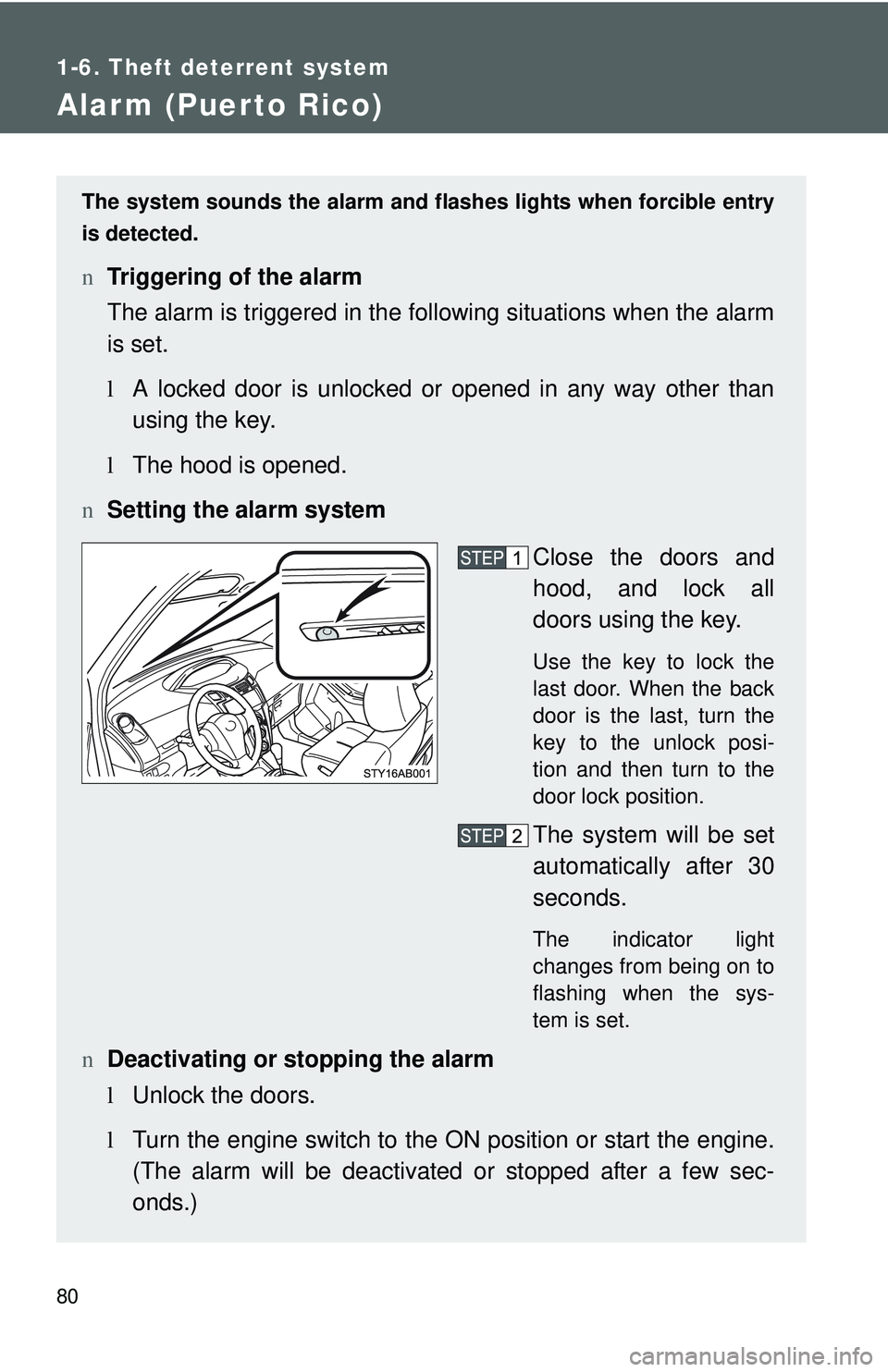

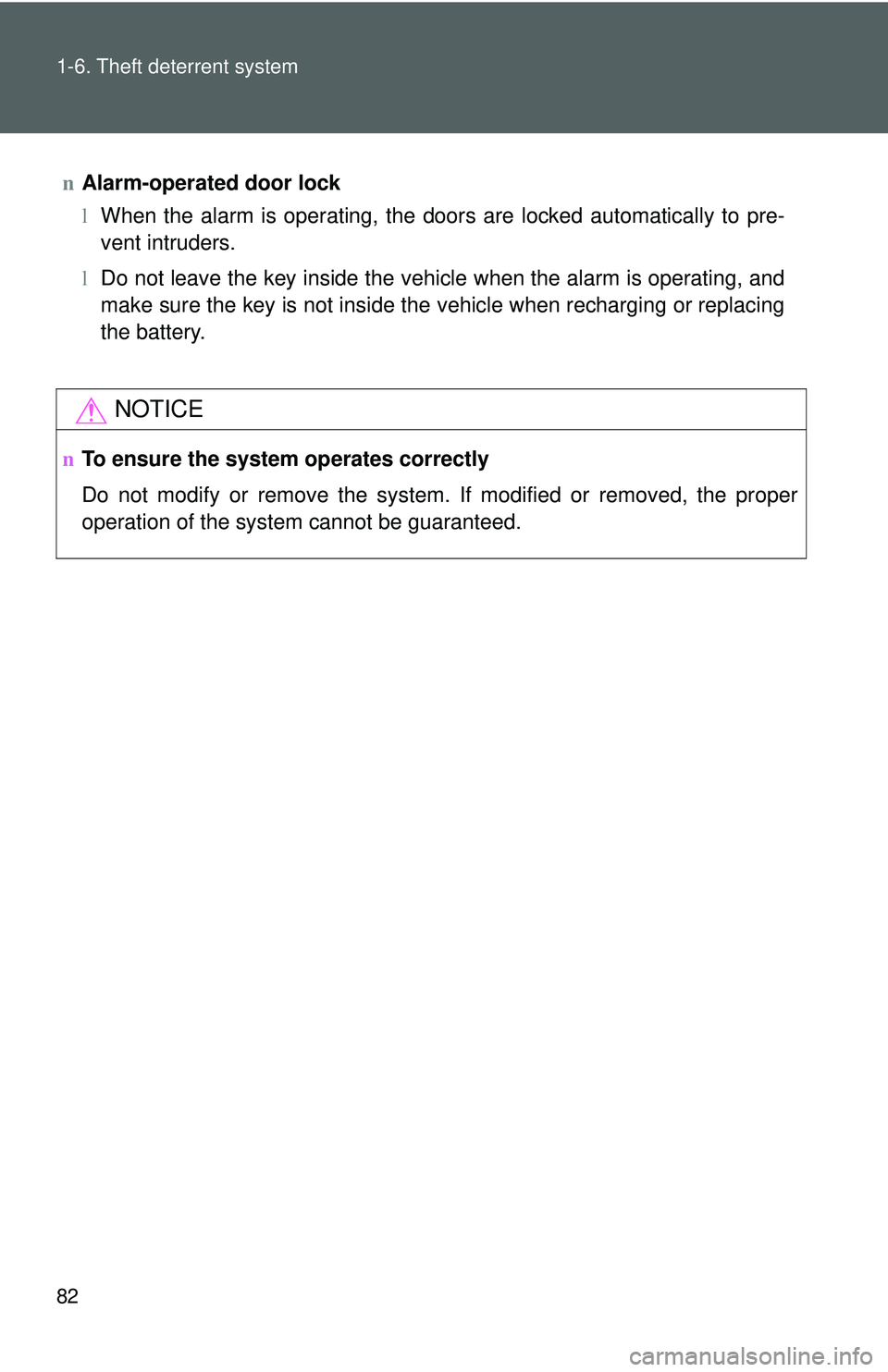
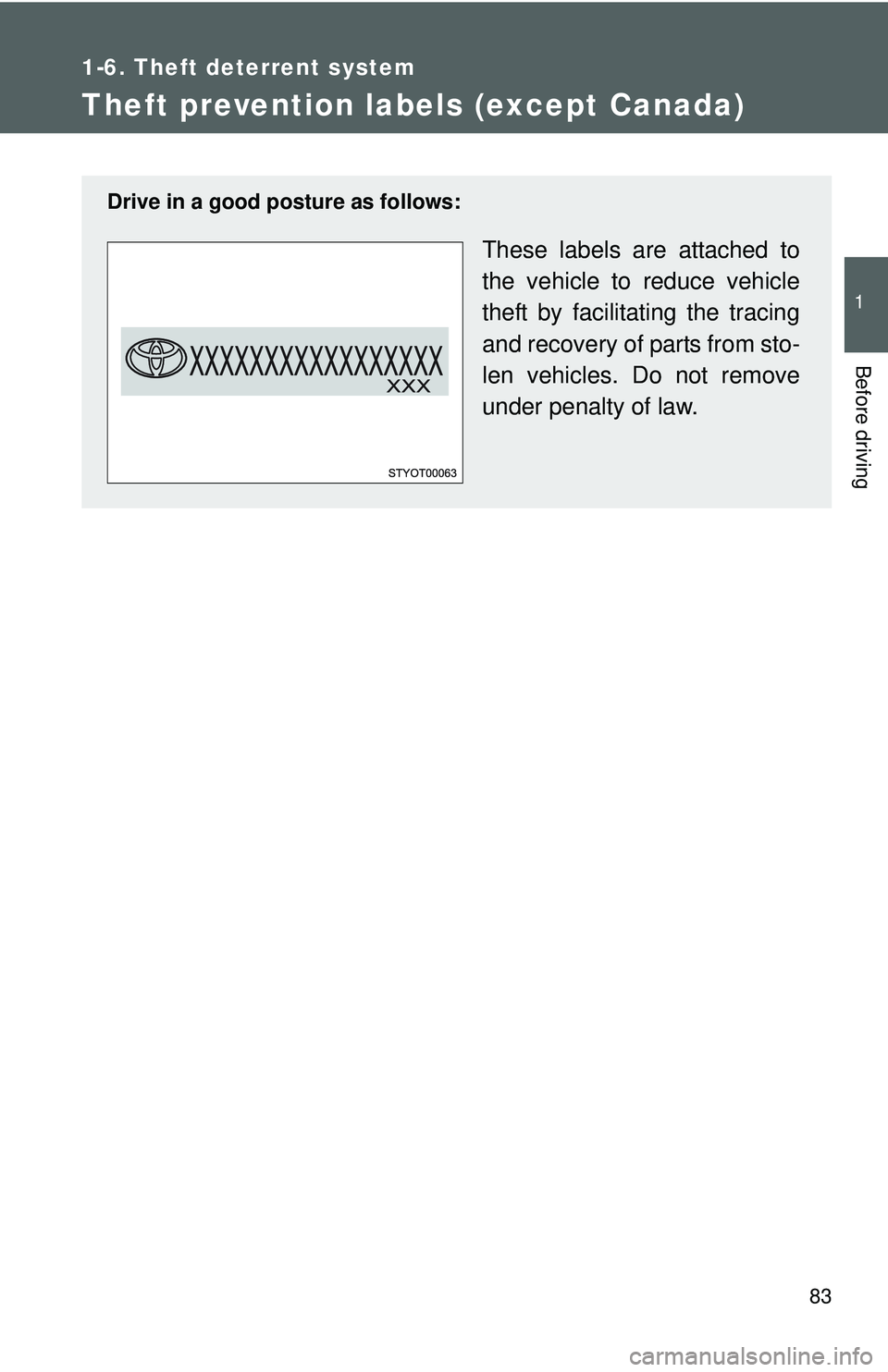
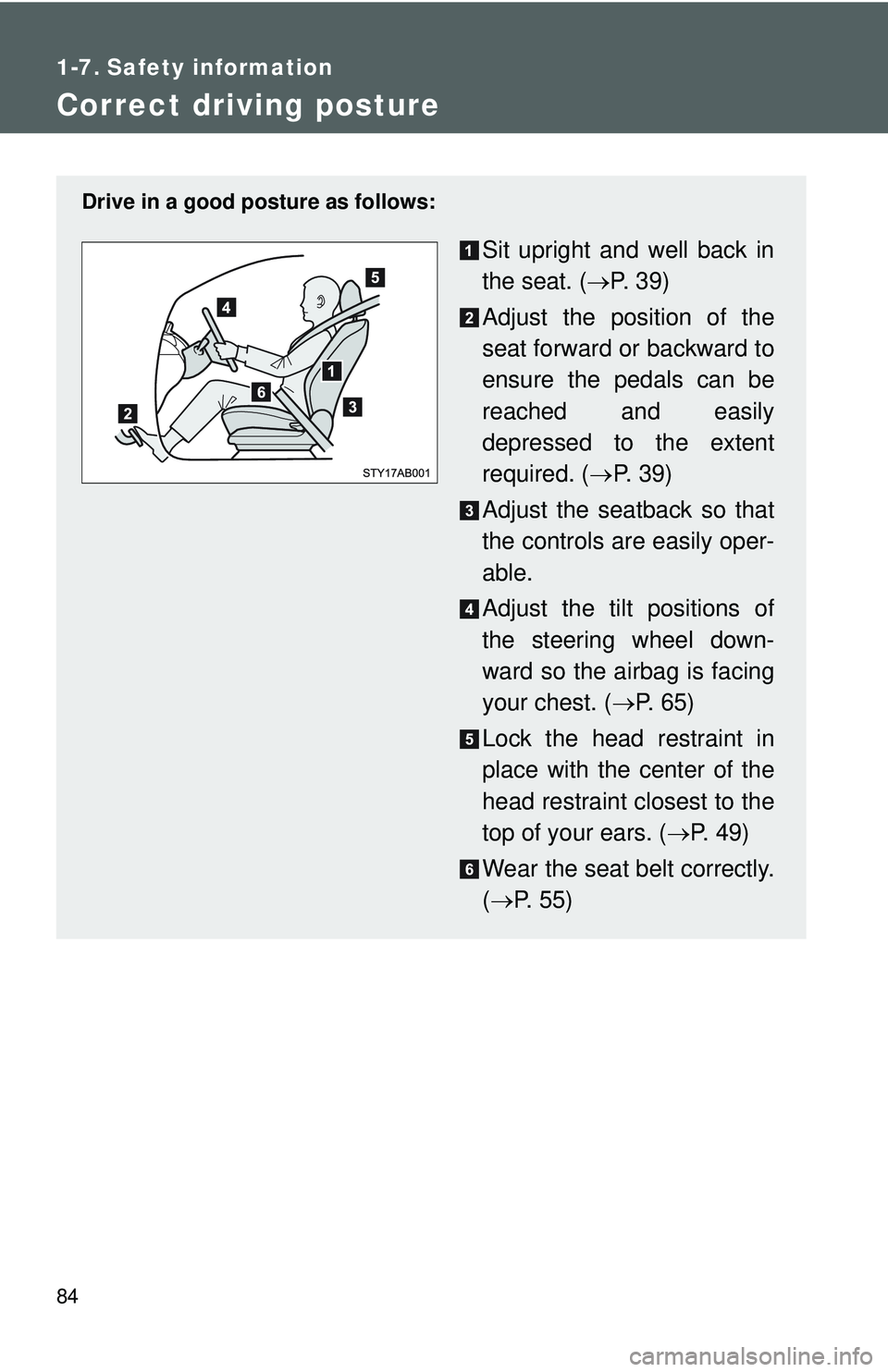

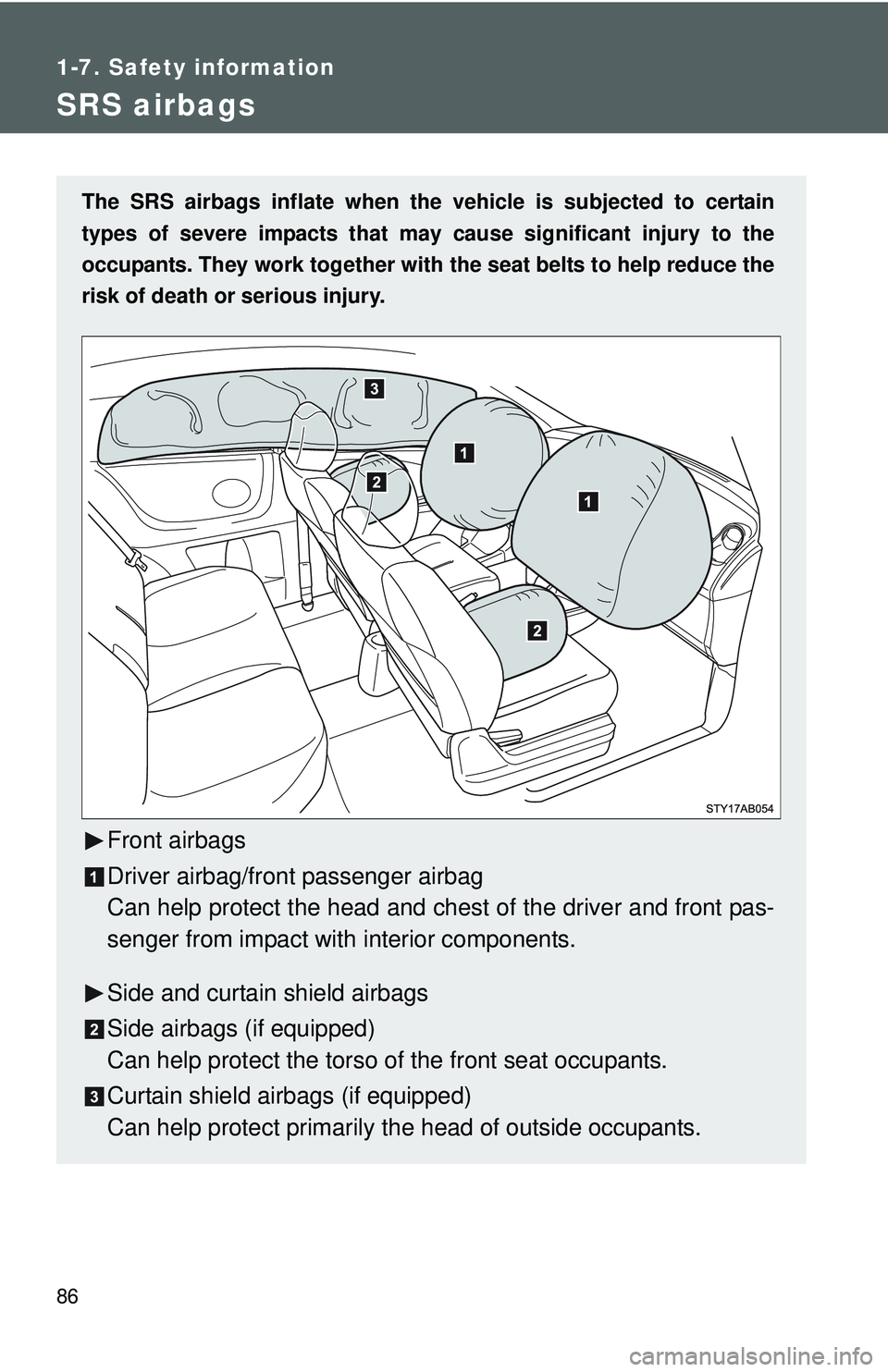


![TOYOTA YARIS HATCHBACK 2011 Owners Manual 79
1-6. Theft deterrent system
1
Before driving
]
n
System maintenance
The vehicle has a maintenance-free type engine immobilizer system.
n Conditions that may cause the system to malfunction
l If th TOYOTA YARIS HATCHBACK 2011 Owners Manual 79
1-6. Theft deterrent system
1
Before driving
]
n
System maintenance
The vehicle has a maintenance-free type engine immobilizer system.
n Conditions that may cause the system to malfunction
l If th](/img/14/59278/w960_59278-92.png)






